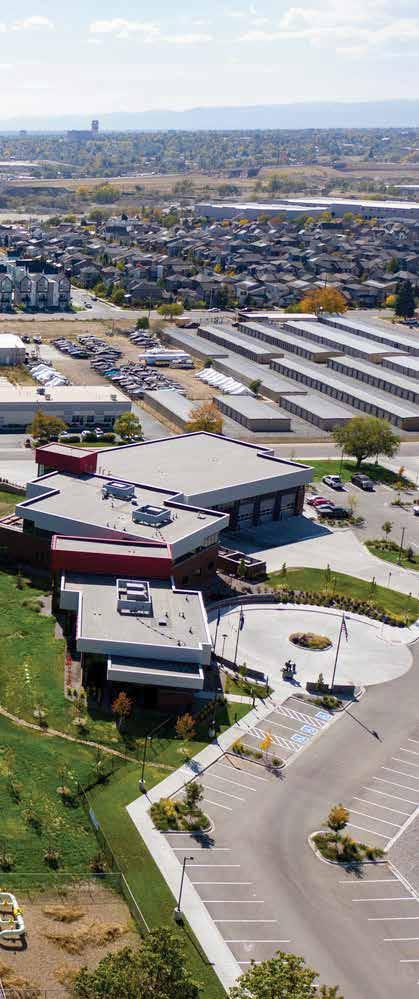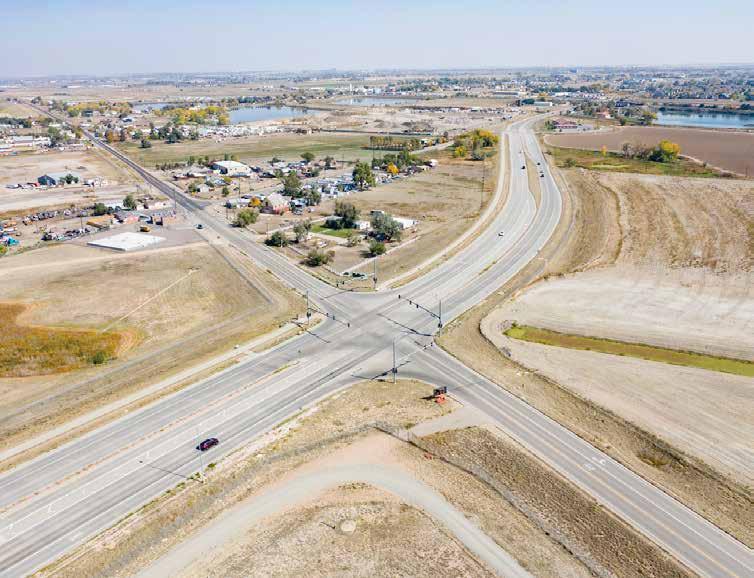
2 minute read
DRAFT
Built Environment and Connections
The built environment is characterized as the human-constructed, physical aspects we interact with on a regular basis. The road and transportation network, street design, buildings and development patterns, landscaping, utility infrastructure, and even humanmade parks constitute the built environment. The components of the built environment, especially when aligned, contribute to a sustainable and livable community.
Community can be characterized as the interaction of people supported by destinations, places to gather, and chance interactions and is a cornerstone of livability. People are drawn to areas where they can socialize, recreate, shop, find work, eat, and learn; centers are intrinsic to our idea of community. These land use characters detailed in Chapter 2 establish the development expectations and populations necessary to attract and sustain the housing choice, services, employment, and business for a complete community. People must have comfortable, direct, and safe ways to get to necessary daily locations such as work, services, retail, and schools. The transportation system should be multi-modal and work within the context of the surrounding land uses to support a full spectrum of transportation needs, from the facilitation of freight to the enhancement of a safe and accessible trail network.
The county provides services for roads, code enforcement, and development review. Water and utilities, on the other hand, are administered by municipalities or special districts. Coordinating the provision of utilities with existing infrastructure is crucial for future sustainable development, redevelopment, and infill.
The built environment must be planned in a way that considers functionality and livability. Careful placement of development advances the County toward meeting its aspirations for the future. This includes ensuring infrastructure like utilities and broadband are easily accessible to development and do not require excessive expenditures to extend. Economic development strategies can address workforce development in a localized sense. Place-based strategies include ensuring homes and jobs are connected by reliable and safe transportation networks, protecting against low-to-moderate income job holders being priced outward and, therefore, bearing the burden of high transportation costs, and ensuring the workforce is not displaced by high housing costs.
It is important that new development be located out of areas with high risk for flood and wildfire and that lands that have historically been used for environmentally hazardous industries are appropriately remediated or mitigated for new development. Expansion to undeveloped portions of the county should be carefully considered and limited. Instead, strategies should explore enhancing and adaptively reusing existing properties to support responsible development patters. New developments should prioritize energy e ciency, the use of renewable energy, and innovative technologies to mitigate greenhouse gas emissions. The built environment significantly impacts the sense of urban, suburban, and rural characters found throughout the county. While the Comprehensive Plan applies to the unincorporated parts of the county, it is important to recognize the interconnections between incorporated and unincorporated parts of the county and plan for transitions accordingly. This chapter further applies the 20-Minute Community framework. The framework seeks to integrate connections between transportation and parks from the TMP and POST plans by guiding services and supportive development to reinforce established communities in the county. Finally, the built environment has significant influence on sustainability, human-made and natural hazards, and the opportunities to live a fulfilled and healthy life.











